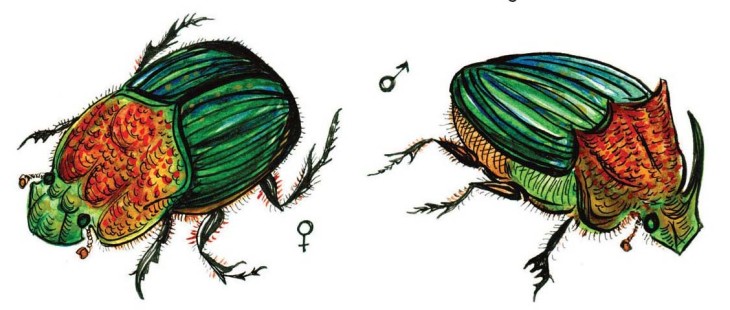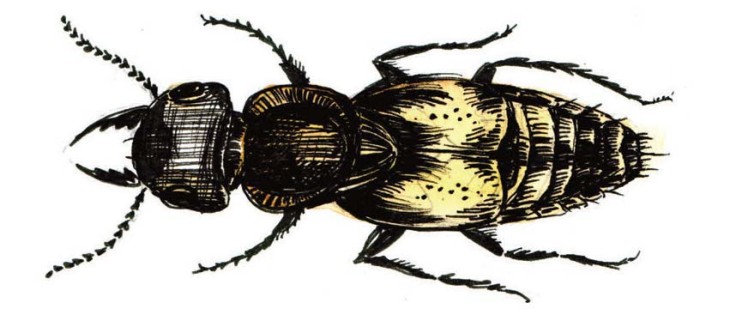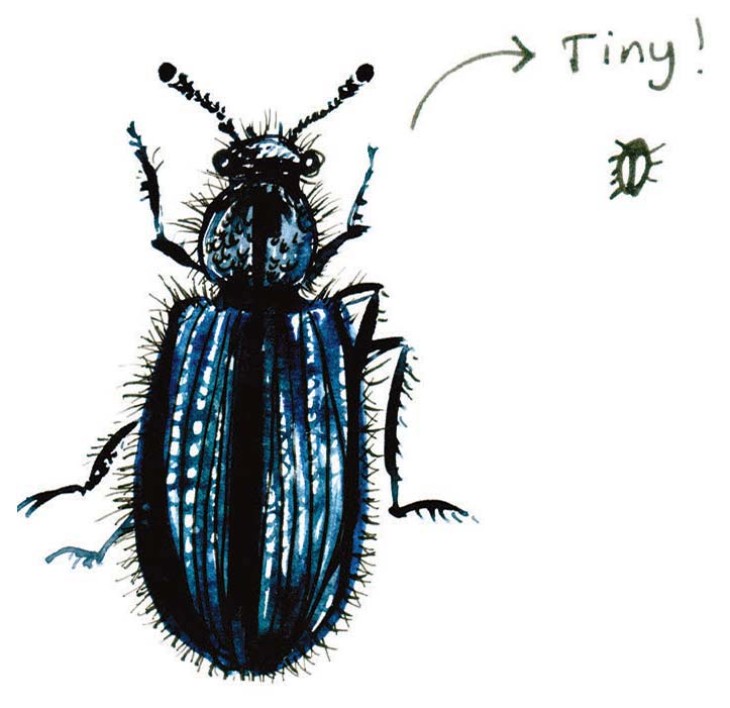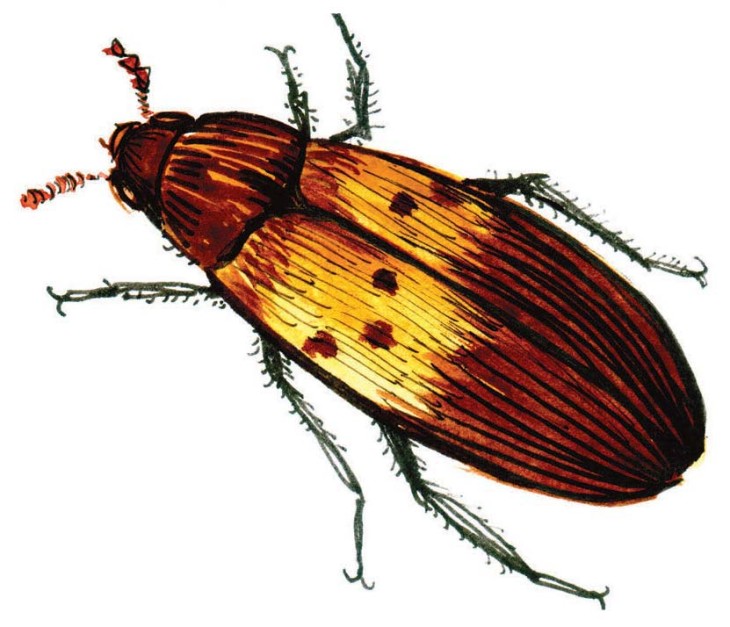
Carrion is a great place to find insects, especially beetles and flies.
Specific insects are attracted to dead animals as they decompose, with a predictable progression of visitors each preferring a particular stage of decay.
Among the first are blue bottle flies, a type of blow fly. They lay eggs on the carcass, and the hatching larvae consume the fresh tissues. Flesh flies are another early arriver. Unlike the blow flies, they get a jump on things by depositing larvae rather than eggs. Live birth!
Numerous fine beetles will visit later. Choice among these are the aptly named carrion beetles. They consume larvae left behind by the flies. Some members of this family excavate the soil beneath small dead animals and bury them in the ground. Eggs are laid upon this stash, and when they hatch, the beetle larvae have all the food they need. Dung beetles behave similarly with pieces of dung. Sometimes these two interest groups overlap; one year a friend and I turned over a freshly killed deer along the highway in Florida and found Phanaeaus, a horned rainbow scarab dung beetle. I was thrilled.
While exploring Vermont’s Lamoille River, I came across large piles of pan fish that had been filleted and discarded that were loaded with carrion beetles. Success! That same day I also found the better part of a deer carcass stashed in a black plastic bag next to a parking lot. It was overwhelmed with fly larvae, and I decided not to investigate much further; when fly maggots become very dense, carrion beetles tend to go elsewhere. So did I.
Staphylinid beetles are another carrion visitor, opportunistically eating maggots while depositing eggs of their own. Unlike most beetles, Staphylinids have short elytra (wing covers), which look like short capes. This allows them to curve their elongated bodies and to maneuver into tight spaces.
When a carcass is old and drying up, it might be visited by ham beetles. As you might imagine from the name, these beetles also visit dried hams hanging in smokehouses. I was delighted to find these beetles one spring on a deer skeleton. Identifying an unknown beetle can be intimidating, but this was relatively straightforward: the metallic blue body covered with stiff black hairs and stout antennae gave it away. It was Necrobia violacea, a European native that appears to have been introduced to North America by people and their love for cured meats.
Even mummified remains still smell good to dermestid beetles. One year I regularly found Dermestes in my apartment. Whatever they were eating was a mystery to me – and made me a bit nervous. What did I lose track of in my own home? I finally discovered it in an old, dried wing of a ruffed grouse discarded by a hunter, which I had brought home and pinned to the wall – and which the beetles seemed to be enjoying. I was reminded that beetles can – and will – eat just about anything that was once alive.





